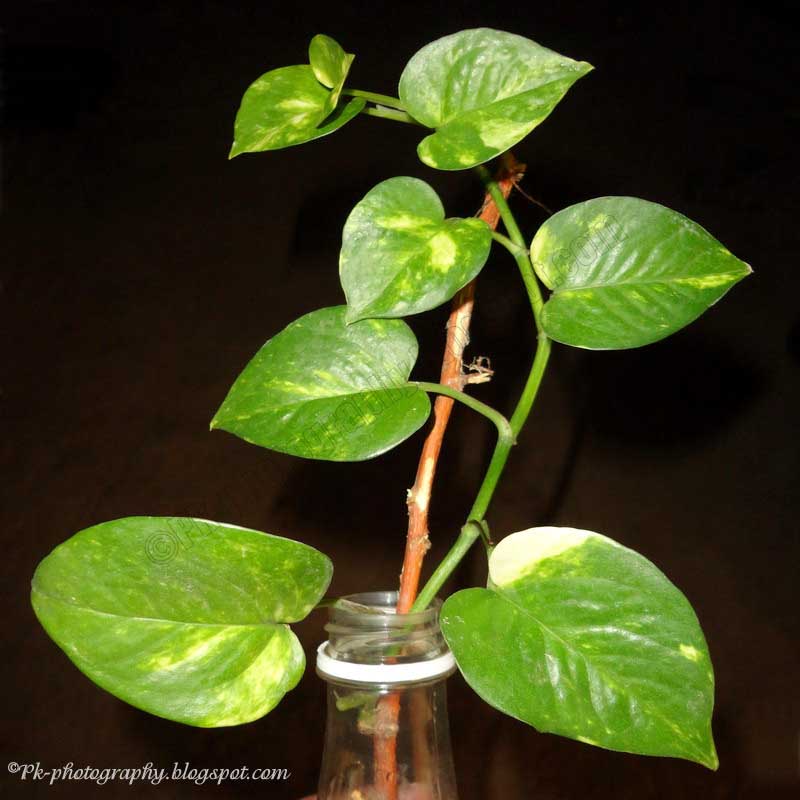Unlock Joy and Prosperity: Your Ultimate Guide to Growing Money Plant Magic

Money plants are among the most beloved houseplants, thanks to their lush greenery, easy-going nature, and—let’s be honest—the hope that they’ll bring some extra luck (and maybe cash flow) your way. But if you’ve ever Googled “money plant care,” you’ve probably noticed how much generic advice is out there. So many guides repeat the same vague tips: “Don’t overwater,” “Give it light,” “Prune occasionally.” Sure, that’s a start—but what does it really mean when your jade’s leaves start yellowing or your money tree looks sad despite following all the rules?

I’ve been through those frustrating cycles myself—overwatering disasters, stubborn cuttings that refused to root, mysterious pests appearing overnight. What I’ve learned is that understanding exactly which money plant you have is step one... and then tailoring care precisely makes all the difference.
This guide will walk you through everything from identifying your money plant correctly to advanced propagation tricks and troubleshooting oddball problems. Ready? Let’s dive in.
1. What Exactly Is a “Money Plant”? Decoding the Label
“Money plant” isn’t just one type of plant. It’s a nickname applied to several species across different regions—and that causes confusion, especially if you’re trying to care for yours properly.
Here are the three most commonly called “money plants”:
Pachira aquatica — The True "Money Tree"
- Look: Characteristic braided trunks (if bought as such), with glossy leaves shaped like fingers stretching from a palm.
- Personality: It grows as a small indoor tree, loves bright but indirect light, and tolerates some shade.
- Why people love it: It’s a Feng Shui favorite for bringing prosperity and positive energy.
- Care tip: Keep soil moist but never soggy; avoid direct midday sun which can scorch leaves.
Crassula ovata — The Jade Plant
- Look: Thick, woody stems with plump oval leaves often edged red in strong light.
- Personality: A slow grower but a tough succulent; it can live decades with minimal fuss.
- Why people love it: Symbolizes good fortune and friendship.
- Care tip: Needs plenty of bright light; water sparingly once soil dries two inches deep.
Epipremnum aureum — Pothos (Often Called "Money Plant" in Asia)
- Look: Trailing vines with heart-shaped green leaves variegated yellow or white.
- Personality: Fast-growing, thrives in various light conditions, great for beginners.
- Why people love it: Easy air purifier and super hard to kill.
- Care tip: Water thoroughly but let soil dry between watering; tolerate low light but grow faster with more brightness.
Quick ID hack:
If your plant has thick fleshy leaves—it’s almost certainly jade. If it's trailing vines—it’s pothos. Braided trunks? You’ve got a money tree.
2. From Buy to Thrive: Your Step-by-Step Money Plant Care Blueprint
Getting off on the right foot can save months of frustration. Here’s what I recommend after plenty of trial and error:
Step 1: Choose Healthy Plants Like a Pro
Before buying, always check:
- Leaves are vibrant green without brown spots or yellow edges.
- Stems/trunks feel firm—no softness or mushiness signaling rot.
- Roots peek through drainage holes? Look for pale beige or white roots—not black or circling tightly.
- Soil feels lightly moist but not drenched.
True story: I once grabbed a seemingly perfect jade from a big box store only to find root rot two weeks later. The lesson? Roots tell the real tale.
Step 2: Find Their Sweet Spot—Lighting Matters More Than You Think
| Species | Ideal Light | Must-Avoid |
|---|---|---|
| Pachira aquatica | Bright indirect | Direct intense midday sun |
| Crassula ovata | Strong direct sunlight | Dark corners |
| Epipremnum aureum | Bright indirect to shade | Completely dark spaces |
Pro tip: For jades craving sun, ease them into direct southern exposure over two weeks—don’t blast them suddenly or leaves burn quickly.
Step 3: Pot & Soil — Drainage Is King
Potting choices make or break health. Here are my favorites:
- Money Tree: Use standard indoor potting mix with an extra 20% perlite or coarse sand for drainage.
- Jade Plant: Succulent/cactus mix topped with pumice or grit helps prevent soggy roots.
- Pothos: Regular potting soil works fine; add orchid bark chunks if you want aerial roots galore.
Clay pots breathe better than plastic ones—less chance your roots drown if watering gets wonky.
Step 4: Water Like You Mean It
Watering mistakes cause half of all money plant deaths:
- Only water when top inch of soil (or two inches for jade) feels dry.
- Stick your finger in; no moisture meter needed unless you want precision.
- Use room temperature water—cold water shocks roots and slows growth.
Confession: I killed at least three mature jades before adopting this wait-and-check method religiously.
Step 5: Feed Without Burning
Overfeeding shows up as crispy leaf tips or burnt edges—and not immediately obvious.
Here’s my go-to fertilizer plan:
- Dilute liquid fertilizer to half strength during April through September.
- Feed once every four weeks max.
- Skip fertilizer completely in winter unless you see fresh baby leaves popping out unexpectedly.
Yes, even I have accidentally fed full-strength monthly… painful lesson! Flushing saved my money tree but left ugly scars I still notice months later.
Step 6: Prune Like a Gardener
“Prune occasionally” means nothing until you know how and why:
- Jade: Pinch back new shoots above leaf pairs monthly during growing season for a bushier look.
- Money Tree: Trim lanky stems just above nodes; rotate pot weekly so light hits evenly on all sides.
- Pothos: Snip back unruly vines anytime—they sprout right back faster than you think!
Always sterilize shears between plants—mealybug outbreaks taught me this the hard way when entire shelves took a hit.

3. Next-Level Care & Propagation Hacks
Want to turn from casual houseplant owner into true money plant master? Let’s level up with these insider tricks:
Propagation Tips That Actually Work
Jade Plant Cuttings
Let stem cuttings dry out horizontally on paper towel for five days before planting. This ‘callous’ step cuts fungal infections massively compared to immediate potting.
Money Tree Cuttings
- Dip ends in rooting hormone powder (Clonex Gel is my favorite).
- Place cuttings under clear humidity dome—a cake carrier works perfectly!
- Mist daily while keeping warm; roots usually form by weeks 3–5.
Air Layering Pachira
Try this when cuttings fail: make a shallow cut halfway through stem still attached; wrap moist sphagnum moss around it tightly wrapped with plastic wrap sealed well. Once roots peek (~8 weeks), snip below and pot up strong baby tree saplings instantly ready for growth!
Pothos Water Culture
Super easy zero-mess propagation: put clean cuttings directly into filtered/distilled water with a drop-in aquarium charcoal bit to prevent algae growth. Roots pop out sparkling white within three weeks and smell fresh too!
Hydroponics Experiments For Busy People
If low-maintenance and style appeal to you—a hydroponic pothos is magic:
- Strip soil carefully from roots (rinse gently).
- Suspend vine in narrow-neck vase half-filled with distilled water + tiny pinch of hydroponic fertilizer monthly after establishment.
- Change water weekly (set phone reminders!).
Full disclosure? Jades don’t last long hydroponically—they prefer solid ground—but pothos thrives here spectacularly.
Sculpting & Display Upgrades
Keep mature jades dense & shapely by bonsai-style pruning every spring—trim internodes tight so branches don’t stretch thinly apart. Wire training helps shape tricky branches without snapping brittle limbs (a borrowed bonsai move).
For money trees, braid trunks early when about pencil thickness—older wood will snap rather than bend gracefully (I tested this more than once).
Heavy pots plus decorative stones on top stop tall plants toppling from window breezes or curious pets—a $15 investment saved me multiple heartbreaks after losing prized specimens!
4. Troubleshooting With Confidence: Real Problems & Solutions
Every collection hits bumps—being ready means catching problems early:
| Problem | What You See | Quick Fixes |
|---|---|---|
| Yellow Leaves | Lower leaves droopy/yellowing | Stop watering until soil dries fully; flush salts if only leaf tips yellow |
| Mushy Stems | Soft/squishy base | Unpot immediately; prune rotten parts; repot in fresh airy soil |
| Mealybugs/Scale | White fuzzy patches/sticky dots | Isolate affected plants! Dab alcohol on pests + neem oil spray every 3 days |
| Leggy Stretching | Long gaps between leaves | Move plant closer to brighter window ASAP |
Real case: Isolating brand-new arrivals by default for two weeks stopped one surprise mealybug invasion before it took down half my shelf overnight. Don’t skip quarantine!
Pro tip: Document changes visually using free apps like Planta or Gardenize—you’ll catch subtle declines earlier than memory alone allows.

5. Tap Into Community Wisdom & Resources
Learning alongside others speeds mastery and morale:
- Reddit r/houseplants — Post photos/questions any time for fast feedback
- Facebook groups (“Jade Addicts,” “Money Tree Enthusiasts”) — Swap rare cuttings + crowdsource pest fixes
- YouTube channels like Summer Rayne Oakes’ “Plant One On Me” — Visual deep dives into propagation/growth quirks
- Books like The New Plant Parent by Darryl Cheng — Data-backed care strategies rooted in experiments instead of guesswork
One insight I keep reminding myself: If advice conflicts online, consider local climate first—the same routine can yield wildly different results between humid Singapore vs dry Colorado!
6. Your Foolproof Action Plan To Flourishing Money Plants
Here’s how I coach friends struggling after repeated failures:
- Identify Your Species – Snap clear photos & confirm online communities before buying supplies!
- Choose Healthy Plants – Use the checklist religiously at purchase points each time.
- Map Light Levels In Your Home – Spend an afternoon checking where sun hits most consistently before final placement (phone compass apps help!).
- Prep Soil Ahead – Mix your potting medium before unpotting new arrivals to reduce transplant shock dramatically!
- Water By Feel – Ignore calendar reminders until touch/moisture meter readings sync naturally with plant needs!
- Rotate Weekly – Set recurring phone alerts post-watering session so plants get balanced sun exposure—prevents lopsided growth!
7 . Inspect Fortnightly For Pests/Dust – Gently wipe leaves & check undersides/joints carefully each time you walk past them!
8 . Preventative Monthly Neem Oil Spray – Especially if community exposure history suggests seasonal risk outside/insects around windows/pets indoors!
9 . Track Progress Visually Quarterly – Take progress shots/share notes via apps/journals = helps spot trends before issues escalate!
10 . Share Cuttings Generously – Giving offset cuttings builds friendships AND local backup support network should disaster strike unexpectedly…
This system saved me countless hours/days/months stranded guessing—and transformed caring from chore into something I genuinely look forward to every week now!
Bonus Section — Cultivar Exploration & Prosperity Rituals
Once basics hum smoothly… why not try cultivating unusual cultivars like the tubular-leafed “Gollum Fingers” jade? Or experiment with wall-mounted planters/macramé hangers custom-fit exactly for your room microclimate?
Integrating plants according to Feng Shui principles can be fun—but only do it if it feels meaningful rather than just trend-following hype.
Final Thoughts
Your journey won’t always be smooth—I’ve had moments where entire shelves needed rescue attempts after rookie mistakes—but those triumphs? They’re worth every trial because thriving money plants bring more than beauty—they bring confidence and calm into your space.
Remember: patience is key; consistency beats intensity every time; listen carefully to your plant signals instead of forcing them into strict schedules—and share your successes/failures openly within the community—you’ll find others who understand better than anyone else ever could.
Got questions? Fire away anytime—I’m rooting for you!
With this guide, you now have everything—from species ID through pro propagation—to confidently grow healthy money plants that not only survive but thrive beautifully year-round.
If you want quick reference tips or printable checklists added here next time—just say so! Meanwhile… happy growing!



